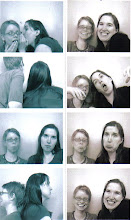A Little History
Richland officially became a town in 1905 and became incorporated in 1910. However, in the early 1940s, the government came in and purchased 640 square miles along the Columbia, evicting Richland's 300 residents as well as the nearby towns of White Bluff and Hanford, which to this day remain unpopulated. It then moved in people for the war effort, making Hanford a work camp and Richland a bedroom community for the workers of the Manhattan Project. The area was top secret. Misleading addresses were distributed, and all mail was postmarked Seattle. The Army Corps of Engineers designed the new town, which now had a booming population of 25,000. They assigned housing, planted trees in yards, cut out the streets and named them after engineers:
- George Washington Way: President Washington was a surveyor
- Stevens: John Frank Stevens was the chief engineer of Stevens Pass and the Panama Canal
- Goethals Drive: George W Goethals designed the Panama Canal
- Thayer Drive: Sylvanus Thayer was the founder of the first professional school of engineering in the U.S. at Dartmouth College.
Notably in the city's history is the incident of the "Day's Pay." In 1944, every worker at the Hanford Nuclear Site donated a day's pay to the US Air Force to purchase a B-17G plane. A mural commemorating this act is painted on the exterior wall of Richland High School, home of the Bombers.
It wasn't until 1957 that the government pulled out and started selling land to private citizens. In 1958, Richland was officially reincorporated, making 2008 its 50th anniversary.
A Little About Hanford
You can't talk about Richland without addressing Hanford. The Hanford nuclear reservation was built in 1943 as part of the Manhattan Project during WWII. It is home to the B-Reactor, the first full-scale plutonium production reactor in the world. Plutonium manufactured at that site was used in the bomb dropped on Nagasaki, Japan three days after the Hiroshima bombing.
During the Cold War, the project was expanded to include nine reactors and five plutonium processing complexes. However, during the early years of the facility, disposal operations were inadequate, and the site released radioactive material into the air and water of the Columbia.
At the end of the Cold War, the weapons production reactors were decommissioned, leaving behind 53 million gallons of nuclear waste--2/3 of the U.S.'s total nuclear waste. Today, Hanford is the nation's most contaminated nuclear site. While most efforts on the site today are focused on the environmental cleanup left behind by the war era, Hanford also hosts a nuclear power plant, the Columbia Generating Station, which provides 9% of the state's electrical generation capacity.
Today, many of the area's "high end" jobs are at companies having one thing or another to do with the Hanford site--whether it be cleanup, power generation, or the extensive centers for scientific research and development.
Today
In an area dominated by nuclear reactors, there is a sense of community that draws forth. The city has only two high schools, and people tend to live here their entire lives. Other focuses of the area are agriculture and viticulture. The Columbia Basin hosts 7,000 hectacres of wine grapes, and nearby Red Mountain consistently grows award-winning wine grapes. Richland itself has three wineries in town, 20 more within a 15 minute drive, and more than 100 within a 60-mile radius.
With wide streets, a multitude of community activities, a tight-knit feel, and acres of lush parkland adjacent to the Columbia River, how can one not believe the residents who adamantly claim again and again that Richland is a good place to raise a family?

2 comments:
Did you know there is an effort to turn the B Reactor at Hanford into a museum?
www.inlander.com/topstory/291953977254335.php
i didn't know that! that's crazy!! they should hang up big pictures of nagasaki, especially the hospitals a few days after and of ground zero.
Post a Comment